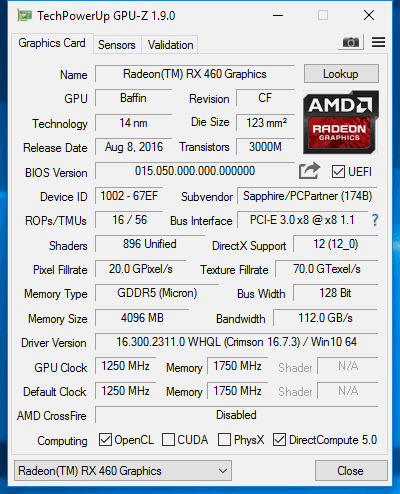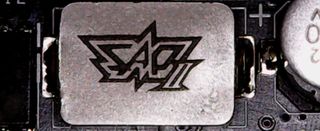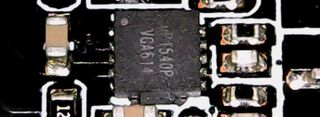AMD Radeon RX 460 Review

Meet AMD's Radeon RX 460 4GB
To say we were surprised when AMD started talking about Polaris almost seven months before its roll-out is an understatement. Why build anticipation for next-generation hardware so far in advance, undermining interest in the stuff you’re already selling? Then we got word that Polaris would begin life gunning for volume. I can’t speak for the rest of the tech press, or even other Tom’s Hardware writers, but I admit thinking to myself that the company was setting us up for another re-spin of familiar hardware adapted to the 14nm node.
A few things happened between the beginning of 2016 and now, though. First, we got our first taste of real games written to exploit DirectX 12’s and Vulkan’s features. This is doing a lot more for AMD than it is for Nvidia. Second, we saw Nvidia steamroll the high-end space. There’s no way to know how AMD’s flagship will fare once it’s ready. But putting Vega 10 first would have risked a battle on the brand new process node that could go either way. Instead, the company is bagging one value win after another at 1920x1080 with Polaris. AMD hopes to see that momentum continue with the introduction of Radeon RX 460, based on an entirely new Polaris 11 (code-named Baffin) GPU. We’re told you’ll find this card for $110.
Radeon RX 460: Something Refreshingly New Down Low
For years, mainstream gamers lapped up AMD’s old designs, repackaged and discounted. Take Radeon R9 370X, for example, which debuted in late 2015 for ~$180. Its Trinidad GPU was the same Curaçao processor at the heart of Radeon R9 270X, introduced in 2013 at a $200 price point. But Curaçao was already a re-brand of Pitcairn, first seen in the Radeon HD 7870. That card came out in March of 2012 for $350. Do we call that trickle-down graphinomics?

The shift to 14nm FinFET inherently means we’re looking at a new GPU, even if Polaris 11 does share a number of attributes with its predecessors. Compared to Polaris 10, composed of 5.7 billion transistors on a 232 mm² die, Radeon RX 460’s processor packs three billion transistors into 123 square millimeters of die space. It’s similarly based on AMD’s fourth-gen GCN architecture, but rebalanced for more power sensitive applications (like thin-and-light notebooks).
| Header Cell - Column 0 | Radeon RX 460 | Radeon RX 470 |
|---|---|---|
| Compute Units | 14 | 32 |
| Stream Processors | 896 | 2048 |
| Clock Rate (Base/Boost) | 1090/1200 MHz | 926/1206 MHz |
| Peak Compute (Base Clock) | 1953 MFLOPS | 3793 MFLOPS |
| Texture Units | 56 | 128 |
| Texture Fill Rate | 67.2 GT/s | 154.4 GT/s |
| ROPs | 16 | 32 |
| L2 Cache | 1MB (?) | 2MB |
| Memory Data Rate | 7 Gb/s | 6.6 Gb/s |
| Memory Bandwidth | 112 GB/s | 211 GB/s |
| Memory Bus | 128-bit | 256-bit |
| Board Power | <75W | 120W |
| Transistors | 3 billion | 5.7 billion |
| Die Size | 123 mm² | 232 mm² |
| Launch Price | $110 | $180 |
A single Graphics Command Processor up front is still responsible for dispatching graphics queues to the Shader Engines. So too are the Asynchronous Compute Engines tasked with handling compute queues. As with Polaris 10, this chip’s command processing logic consists of four ACEs, with two Hardware Scheduler units in place for prioritized queues, temporal/spatial resource management and offloading CPU kernel mode driver scheduling tasks. While many resources are trimmed moving from Polaris 10 to 11, this is not one of them.

Shader Engines, on the other hand, are halved—Polaris 11 gets two, compared to Polaris 10’s four. Moreover, each Polaris 11 SE contains seven active Compute Units, whereas Polaris 10 SEs feature nine. Given 64 Stream processors and four texture units per CU, the math for Polaris 11 adds up to 896 shaders and 56 texture units across the GPU.
Two render back-ends per Shader Engine, each with four ROPs, total 16 pixels per clock, or, again, half of what you get from Radeon RX 480/470. Polaris 11’s memory bus is also cut in half to 128 bits. AMD tries to compensate somewhat with 7 Gb/s GDDR5, but even then you’re only looking at 112 GB/s of bandwidth.
Stay On the Cutting Edge: Get the Tom's Hardware Newsletter
Get Tom's Hardware's best news and in-depth reviews, straight to your inbox.
AMD operates the RX 460’s processor at a 1090 MHz base clock rate that boosts up to 1200 MHz. The company sent our U.S. lab Sapphire’s Nitro Radeon RX 460 OC to test, which is overclocked to a 1175 MHz base and 1250 MHz boost frequency. Tom's Hardware Germany received Asus’ Strix RX 460. That card peaks at 1256 MHz in Igor's Doom test, but then throttles back under FurMark.
This won’t affect the performance of these entry-level discrete boards, but it’s interesting to note that Sapphire’s sample uses a x8 PCI Express 3.0 interface, while the Asus card connects all 16 of the slot's available lanes. A <75W typical board power rating would presumably be serviceable by the motherboard alone. However, both the Sapphire and Asus cards add six-pin power connectors.
A Closer Look At The Asus Strix RX 460

Similar to the Radeon RX 470, AMD decided to forgo its own reference design in favor of letting board partners represent the Radeon RX 460. This might result in graphics cards that truly fulfill the 460’s efficiency goals, or not, depending on what type of designs AMD’s partners implement. For us, this means we can only evaluate what AMD sends over, even if we'd prefer a more efficient example of Polaris 11.
Again, both Tom's Hardware US and DE received factory-overclocked cards. Igor took apart his Asus Strix RX 460 with a six-pin power connector for us to analyze more closely. This is quite a change from last spring’s Polaris demo, which didn’t involve any power connectors at all.

Given what we saw in our AMD Radeon RX 470 4GB Review, we have to ask whether there's any benefit to be had from one of these cards factory-overclocked. If there is, how much extra must we pay? We use benchmark results to answer the first question and power consumption measurements to answer the second one.
Design, Feel & Connectors
The jagged Strix design makes a return with Asus’ version of the Radeon RX 460. However, a lower price target exacts a toll; the look and feel take a necessary hit to bring cost down. The fan cover is stuck on, and doesn't sit in place very securely. Weighing in at 493 g, the card stays under half of a kilogram. This is nice to see, since it has a length of 19.5 cm (measured from the slot cover to the card's end) and a height of 11.4 cm (from the top of the motherboard slot to the top of the card), which implies more heft. The depth of 3.5 cm means this is a two-slot graphics card. It doesn’t have a back plate to interfere with adjoining expansion slots, either.


A quick look at the bottom of Asus' Strix RX 460 illustrates that the two nickel-plated heat pipes used to dissipate thermal energy through the aluminum heat sink's fins shrink to 6 mm (compared to the Strix RX 470's 8 mm pipes).

This top-down view gives us a good look at the ends of the heat pipes. Somewhat surprisingly, there’s also a six-pin power connector turned 180 degrees. Given a low-power card like this, based on a GPU that'll go into laptops, we would have thought it could get away with the motherboard's PCIe slot power. This is doubly true since AMD cites a board power rating of less than 75 watts.

Once again, the Strix logo on the card’s upper edge features RGB lighting effects. The four-pin connector for PWM-controlled fans, which are regulated based on card temperature, makes a comeback as well.

Asus exposes three display outputs on its rear bracket, dropping one of the dual-link DVI ports we saw on the Strix RX 470. This leaves the Strix RX 460 with one dual-link DVI-D output, HDMI 2.0b, and a DisplayPort 1.3 (HBR3/1.4 HDR-ready) connector. That's enough for 4K at 120 Hz and 5K resolution at 60 Hz, but not 8K at 60 Hz, which would necessitate a second DisplayPort output.

Cooler Design, Board & Power Supply
We already mentioned that the cooler’s cover, with its two 75 mm fans, is simply stuck on, held in place by four pins. The PWM-controlled fans have 3W motors, though our measurements show that they don’t exceed 4W, combined, during stress testing. The first one provides the tachometer control signal.

The cooler’s body consists of a simple aluminum heat sink, two heat pipes made of composite material and pressed into the sink's base, and fins on either side. In order to accelerate heat transfer, the pipes reach up out of the base and back in through the aluminum fins.


Similar to the Strix RX 470 we looked at in our AMD Radeon RX 470 4GB Review, Asus opts not to cool the memory at all. Furthermore, the voltage converters aren’t cooled via the graphics card’s main cooler or its base plate. Instead, there’s a small black cooler made of simple extruded aluminum.

There is no back plate either, which isn't necessarily a bad thing. The very light cooler design doesn’t require a stabilizing frame or brace. This means that the slot cover alone keeps the board from bending.

As usual, we find AMD's GPU in the middle of Asus' PCA. The processor is oriented vertically, and it sits in a simple package that doesn’t have a frame.

There are four 1GB memory ICs next to the GPU, totaling 4GB of GDDR5. They don't show up on Micron's parts list, so all we know is that they offer 8Gb density and can operate at 1750 MHz.

The power supply is simple. There are four phases for the GPU and one for the memory. Similar to the Strix RX 470 and 480, Asus went with an individually-labeled PWM controller and MOSFET drivers, which are made by International Rectifier and support up to four phases in this configuration.

The 3.3V rail gets away without any fancy circuitry since it only uses up to 1W. Meanwhile, the GPU's power phases are designed similarly to what we saw from Asus' Strix RX 470. One M3054 N-Channel MOSFET takes care of the high side, while two M3056 N-Channel MOSFETs serve the low side. All of them come from UBIQ.

As with Asus' Strix RX 470, these components are positioned close to each other on the board, which could result in another concentrated hotspot. We’ll take a closer look using a new overlay shortly.

The corresponding coils are labeled SAP II (Super Alloy Power), and they should offer similar quality as Foxconn's magic coils. For the memory’s single phase, Asus uses one small uP 1540 PWM controller by UPI Semiconductor, which is located on the back of the board right behind the voltage converters.

At the top, there’s the N-Channel MOSFET combination described above with its two M3056 and single M3054, the SAP II coil or choke, and the two solid-state capacitors.

The Strix RX 460 uses an ITE 8915FN to monitor and control the current. The board’s layout looks clean, tidy, and well thought out, even though it could have been a lot shorter. The components reflect what you might expect at this price point, but there aren't any weaknesses to speak of.
MORE: Best Graphics Cards
MORE: Desktop GPU Performance Hierarchy Table
MORE: All Graphics Content
-
gdmaclew Just curious as to why you are showing a link to Newegg for the AMD FX-8370 at $169.99? The actual price for that CPU at Newegg has been $189.99 for the past week.Reply
Edit: Should have thanked the authors for their excellent review first. Well done.
-
AndrewJacksonZA Thanks for the review Chris and Igor, I've been waiting for this one! Nicely structured, logical, easy to follow. :-)Reply
I agree with your conclusion: I've been looking for a replacement for my 6670 1GB DDR3 that I picked up in 2012 for $65 and this looks good. I was, however, expecting to see a MSRP of between $85 and $100.
Thanks again,
Andrew -
CaptainTom CURB STOMP!Reply
Very relieved this performed better than those leaked benchmarks. So it is indeed a 70w 7870 for $110.
The are already sold out btw lol -
turkey3_scratch The only one available is a Sapphire RX 460 and it is $170 on Amazon (it's also on Newegg but is sold out). So the RX 460 is being priced what the RX 470 was supposed to be. And the RX 470 is being priced what the RX 480 was supposed to be.Reply
Am I the only one having trouble figuring out where this sits performance-wise? It seems to be all over the place from game to game. CaptainTom, not sold out yet, 12 in stock https://www.amazon.com/Sapphire-Radeon-NITRO-Graphics-11257-02-20G/dp/B01J1M4HDS/ref=sr_1_2?ie=UTF8&qid=1470662745&sr=8-2&keywords=rx+460
Also, these Asus coolers suck. I'm definitely not going to be recommending any Asus card this generation. -
rush21hit This is it. For an entry-level and low powered $100 card at this caliber nVidia can't touch this. This is the winning chip.Reply
If there will ever be cutdown 1060 with 3B as planned, knowing nVidia, it won't even come near this price. -
AndrewJacksonZA Reply
I think that there's one very big thing that the RX 460 has in it's favour over it's older brethren: the new APIs.18404296 said:Am I the only one having trouble figuring out where this site performance-wise? -
turkey3_scratch Reply18404342 said:This is it. For an entry-level and low powered $100 card at this caliber nVidia can't touch this. This is the winning chip.
If there will ever be cutdown 1060 with 3B as planned, knowing nVidia, it won't even come near this price.
The 1060 is whoppingly better. Why would it ever come to this price? Pinch me also if you honestly see an RX 460 for $110. -
AndrewJacksonZA Reply
I think rush21hit was talking about the rumoured 3GB 1060 which was supposed to be "severely cut down," to put it mildly, not the real, actual 1060 which is in a whole different class. One can almost buy 3x 460s for 1x 1060.18404369 said:18404342 said:This is it. For an entry-level and low powered $100 card at this caliber nVidia can't touch this. This is the winning chip.
If there will ever be cutdown 1060 with 3B as planned, knowing nVidia, it won't even come near this price.
The 1060 is whoppingly better. Why would it ever come to this price? Pinch me also if you honestly see an RX 460 for $110.
Having said that... Let's just wait for the 1050 and 1040 to drop before we declare an absolute winner in this price segment, shall we? But right now, you are correct rush21hit, Nvidia has nothing to compete in this price range. I look forward to seeing the changed Best Graphics Cards for the Money article. ;-)